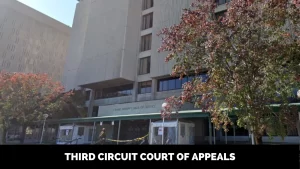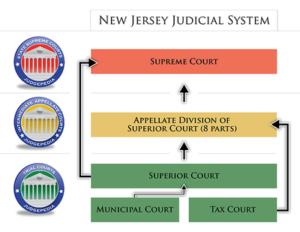Southern District of Iowa
Introduction
The Southern District of Iowa is a federal judicial district that covers the southern and central parts of the state of Iowa. It is one of two federal judicial districts in Iowa, along with the Northern District. The Southern District of Iowa has a long history dating back to 1882 and encompasses a large geographic area covering 49 of Iowa’s 99 counties. The district is an important part of the federal judiciary, handling cases that arise under federal law. This article will provide an in-depth overview of the Southern District of Iowa, including its history, operations, courthouses, leadership, and more.
Background and History
Origins in 1882
The Southern District of Iowa was originally established on July 20, 1882 by an act of Congress. This act divided Iowa into a Northern and Southern judicial district due to the state’s growing population and caseload in the federal courts. The Southern District initially covered just 13 counties in southwestern Iowa at the time of its creation.
Expansions over Time
Over the next few decades, the Southern District of Iowa expanded eastward to cover more of southern and central Iowa. By 1900, the district contained 33 counties. Further congressional acts in 1900, 1910, and 1919 continued to add more counties to the Southern District from the Northern District.
Modern Boundaries Take Shape
The boundaries of the Southern District largely took their modern shape in 1928, when the district grew to cover its current 49 counties across southern and central Iowa. However, minor changes still occurred, including the transfer of Audubon and Guthrie counties from the Northern District in 1982.
Geographic Coverage
Spans Southern and Central Iowa
Today, the Southern District of Iowa encompasses 49 of Iowa’s 99 counties. This includes southern counties bordering Missouri and Nebraska, as well as a block of central Iowa counties stretching northeast towards Cedar Rapids and Iowa City. The district covers roughly the southern half of Iowa.
Major Cities
Some of the largest cities located in the Southern District of Iowa include Des Moines, Cedar Rapids, Davenport, Council Bluffs, and Waterloo. However, the district also includes many smaller rural counties without any major urban areas.
Covers 24,256 Square Miles
In total, the Southern District covers around 24,256 square miles of territory in Iowa. It spans 200 miles from east to west and 126 miles from north to south at its widest points. The districts covers a significant portion of the state geographically.
Federal Courthouses and Facilities
Des Moines Courthouse
The main federal courthouse for the Southern District of Iowa is the Des Moines United States Courthouse located in downtown Des Moines. This courthouse houses courtrooms, judges’ chambers, the clerk’s office, and other facilities. The courthouse opened in 1931 in the neoclassical style.
Additional Courthouses
Beyond Des Moines, the Southern District of Iowa holds court in several other cities including Council Bluffs, Davenport, Creston, Keokuk, and Ottumwa. Each of these cities has its own federal courthouse facility constructed between 1900-1970. Judges will travel to these courthouses to hear cases as needed.
Two Federal Penitentiaries
The Southern District contains two federal correctional institutions – the penitentiaries in Fort Madison and Terre Haute, Indiana. These facilities house inmates convicted of federal crimes.
Leadership and Administration
U.S. Marshal
The U.S. Marshal for the Southern District of Iowa oversees the district’s law enforcement activities including security for courthouses and transportation of federal prisoners. The current U.S. Marshal is Ted G. Kamatchus, who was appointed in 2022.
U.S. Attorney
The U.S. Attorney leads federal prosecutions and represents the U.S. government’s interests in the district. The current interim U.S. Attorney is Richard D. Westphal, who took office in 2021. U.S. Attorneys are nominated by the President and confirmed by the Senate.
Federal Judges
Federal cases in the Southern District are heard by U.S. District Court judges as well as appellate judges from the 8th Circuit Court of Appeals. There are currently five District Court judges and several magistrate judges serving the district.
Caseload and Operations
Types of Cases
Like all federal courts, the Southern District of Iowa handles both criminal and civil cases arising under federal law. Criminal cases prosecuted include drug crimes, white collar offenses, and other federal crimes. The civil caseload includes bankruptcy, patent and copyright issues, environmental lawsuits, and cases regarding the U.S. government.
Busiest District in Iowa
The Southern District of Iowa is the busiest federal court in the state. In recent years, it has handled over 1,000 criminal cases and around 2,500 civil suits annually. The Northern District of Iowa handles smaller caseloads by comparison.
Most Defendants Sentenced to Prison
Over 80% of convicted criminal defendants in the Southern District of Iowa receive prison sentences. Drug trafficking, firearms offenses, and immigration violations make up over 50% of criminal cases prosecuted. The district has a high rate of imposing prison time compared to other districts.
Semi-Annual Grand Juries
Federal grand juries are impaneled in the Southern District of Iowa every January and July to consider indictments in criminal cases. These grand jurors hear evidence presented by the U.S. Attorney’s Office and decide on indictments.
Unique Aspects and Issues
Only District in Iowa
The Southern District of Iowa holds the distinction of being the only federal judicial district that lies entirely within Iowa’s borders. The Northern District also includes several counties in Minnesota and South Dakota.
Prison and Sentencing Concerns
The Southern District has faced some controversy over high rates of imprisonment and long federal sentences imposed. Rehabilitation opportunities and sentence fairness have been raised as issues. The district also houses older prison facilities in need of renovation.
Judicial Emergency from 2009-2013
From 2009 to 2013, the Southern District of Iowa was declared a “judicial emergency” by the U.S. Courts system. During this time, four of the district’s five judgeships were vacant, significantly delaying civil and criminal proceedings. This backlog improved once the vacancies were filled.
Potential Realignment with 8th Circuit
Some Iowa legal leaders have raised the possibility of the Southern District being realigned from the 8th Circuit Court of Appeals to the 7th Circuit, which covers Illinois, Indiana, and Wisconsin. Proponents argue this realignment could help lessen caseloads.
Conclusion
In summary, the Southern District of Iowa has a long history dating back to the late 1800s. It serves an important role in Iowa’s federal legal system, handling numerous criminal and civil cases across a large swath of the state. The district’s operations include courthouses in several key cities, a large staff led by the U.S. Marshal and U.S. Attorney, and federal judges who travel to preside over trials. The Southern District will continue playing a vital part in upholding federal law in Iowa into the future.
FAQs
How many counties are in the Southern District of Iowa?
The Southern District of Iowa covers 49 counties in southern and central Iowa.
What is the population of the Southern District?
Around 2 million people live within the boundaries of the Southern District of Iowa.
Who oversees the Southern District of Iowa?
The Southern District is primarily overseen by the U.S. District Court judges, U.S. Marshal, and U.S. Attorney’s Office for the district.
What cities have federal courthouses in the Southern District?
Federal courthouses are located in Des Moines, Council Bluffs, Davenport, Creston, Keokuk, and Ottumwa within the Southern District of Iowa.
When was the Southern District of Iowa established?
Congress originally established the Southern District of Iowa on July 20, 1882.






